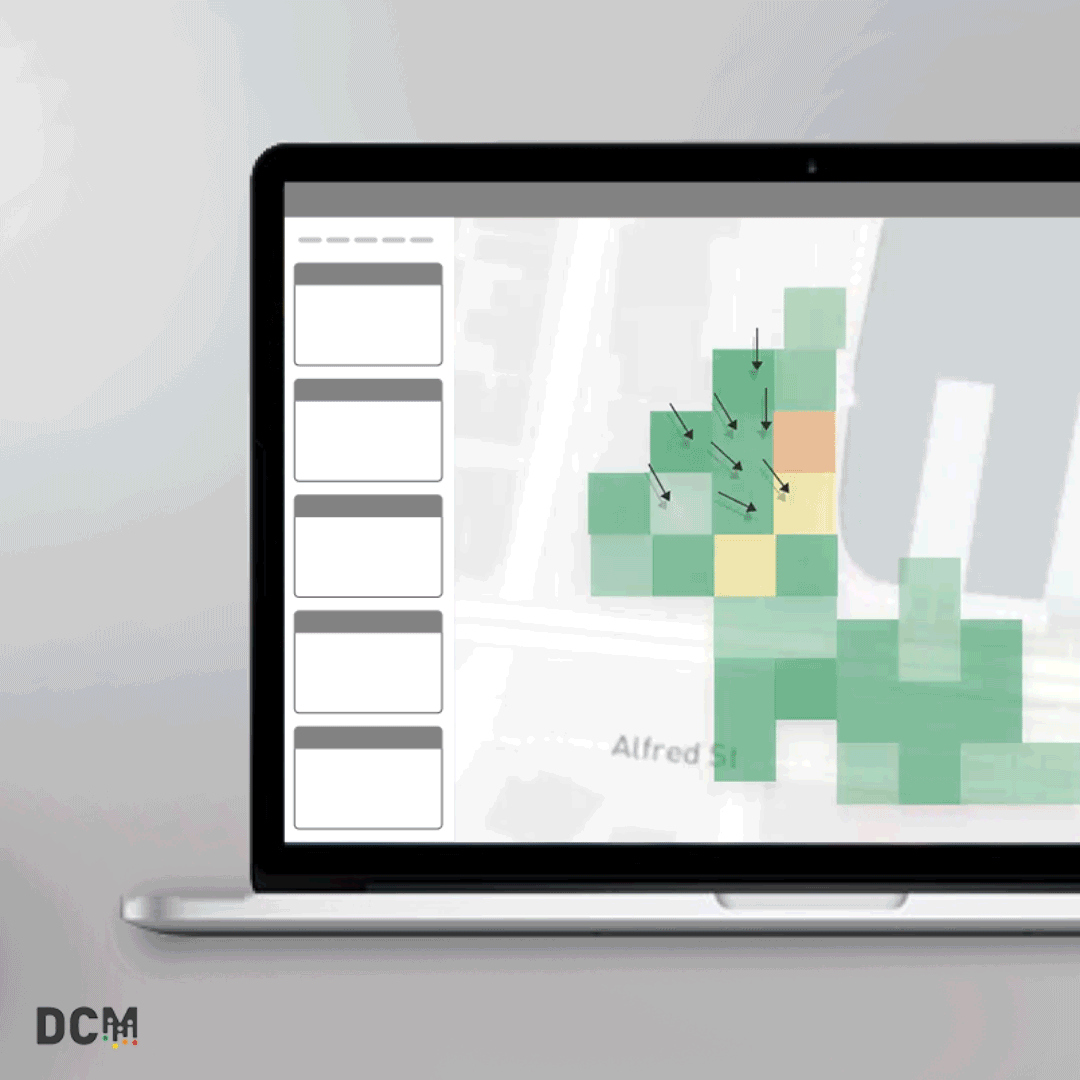
Client: Dynamic Crowd Measurement
Role: UX/UI Lead
Challenge: DCM had a very innovative concept but was facing difficulty communicating that concept to it's users. The users couldn't understand the interface and make sense out of the numbers and graphs in front of them.
Dynamic Crowd Measurement (DCM) is a tool that helps crowd managers access
real-time data about the number of people at a venue, their behaviour of movement and sentiments to better manage the crowd.
PROCESS

RESEARCH
The focus of this step was to decode who our users are? What they want and their pain points. Before dipping my hands into product features and shape, I chose to understand the people, their environment, their job and the day to day problems they face in performing their jobs.
Firstly, I conducted interviews with different personas that were identified as prospective users of DCM such as event managers, security personnel, and crowd managers to identify the need of DCM, their work environment, their process of work and pain-points. This helped me understand the requirements of the product better.
Secondly, I visited their work locations and conducted interviews while they were in action.
Thirdly, I conducted secondary research by researching similar products in the market. and talked to every person involved in the DCM team, from the founder to developers, advisors and marketing person to understand the technical calibre of the product.
KNOWing THE USERS
WHO WILL USE DCM?
Event & Venue Manager
Event Control Room
Operator
Security Manager
Corporate Event Organisers
Day-to-day venue Control
Room Operater
Security Guards & Staff

“We work in an environment of absolute chaos, a lot of decisions are Adhoc. Our decisions need to be informed yet predictive. ”
- Control room Operator

KNOWING THE ENVIRONMENT
Social Public Events
Corporate Events
Indoor/Outdoor Fairs
WHERE WILL DCM BE USED?
Exhibitions and Museums
Train stations,
parks, market streets
Concerts and Festivals
Stadiums
Corporate Buildings
Outdoor
Venues
Indoor
Venues
Exhibition Hall
Auditorium
Concert Hall
Train/Ferry Station
Banquets
Restaurants
Ferry Stations
Pubs/Clubs
Lawns
Market Streets
Outdoor Exhibition Grounds
Pubs/Clubs
Golf/Race course
Beaches
USER PAIN POINTS/FINDINGS
Difficulty tracking
multiple locations
Crowd is unpredictability
Incorrect data estimation
Difficulty measuring the impact of decisions made
Human bias in the information
Reporting is difficult and a manual
No way to measure and record crowd sentiment
Human error
PRODUCT REQUIREMENTS
A map-based platform that allows the users to monitor several locations simultaneously. Users shall be able to administer their crowd management decisions through visual and statistical data about crowds movement, density and sentiments.
Enable quick decision making
Ability to Forecast crowd behaviour
Easy to use
Easy Visualisation of data
Ability to dig deeper into the data
NON-FUNCTIONAL
REQUIREMENTS
Ability to configure multiple cameras/zones for each location
Alerting system
Real-time data tracking
Allow users to view numerous locations quick and easily
FUNCTIONAL
REQUIREMENTS
Should work for indoor/outdoor locations
Track movement, sentiment and density of the crowd
DESIGN ELEMENTS
Primary brand colour
Secondary brand colour
Low Risk
Low-mid Risk
Moderate Risk
High Risk
Typeface:
H1/Roboto/Regular/34px
H2/Roboto/Regular/24x
H3/Roboto/Regular/18px
P1/Roboto/Regular/16px
P2/Roboto/Regular/14px
BUTTON/ROBOTO/MEDIUM/14PX
VISUAL DESIGN


STRUCTURE AND DESIGN
The process took tons of prototyping and testing before coming up with the design. The main focus was to ensure that the interface is able to fulfill its objectives, allows the users to easily navigate and is easy for the developers to develop.
Tools: Pen and Paper
Figma









USABILITY TESTING
Testing was conducted at various levels during the design process.
Paper prototypes were usually used to conduct Guerilla testing and A/B testing where a quick decision had to be drawn. These were usually performed within the office space with existing staff.
High Fidelity prototype was used to conduct contextual moderated testing, where the usability of the product was put into test by allocating tasks to the user. These sessions were often recorded and followed by feedback from the subject.
SHIPPED FOR DEVELOPMENT
Visit www.dynamiccrowdmeasurement.com to explore more about DCM
Btw, I also designed the website.